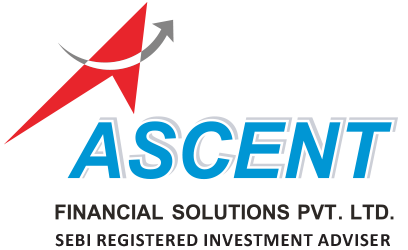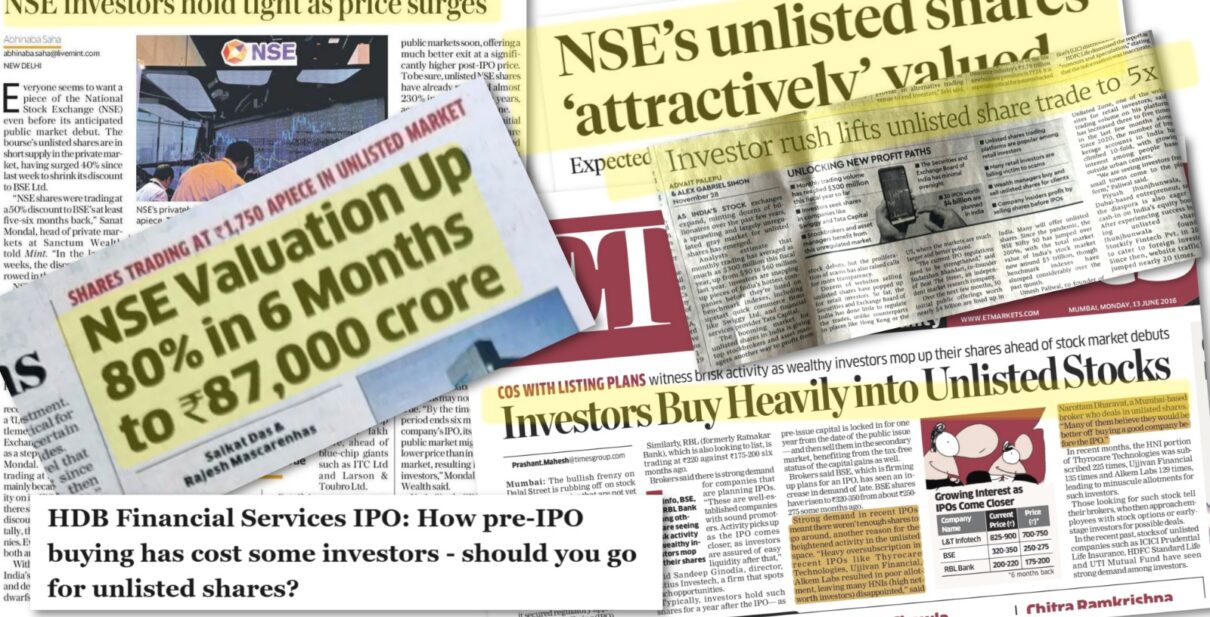You might have come across the news. Investors who bought unlisted shares of HDB Financial Services are now sitting on losses. The IPO price came nearly 40 percent below the last traded price in the unlisted market.
Many had hoped to make a quick profit post-listing. Instead, their investment value dropped overnight. That’s brought unlisted equity back into the conversation. And rightly so.
Unlisted shares aren’t new. But they’ve gained attention in recent years, especially with investors looking to get in early before companies go public. Let’s understand what they are, how they work, and whether they make sense for you.
What are unlisted shares?
Unlisted shares are shares of companies that are not listed on stock exchanges like NSE or BSE. Since they don’t trade on the open market, you won’t find them on your stockbroker’s app.
These shares are exchanged privately — between founders, employees, early investors, or through specialised dealers. You’ll often find them in startups, grow- ing businesses, or even in large companies that haven’t gone public yet.
The space feels exclusive and sometimes offers impressive returns, but it also comes with more risk, less regulation, and limited liquidity.
How do you value something that doesn’t trade on an exchange?
That’s one of the biggest challenges. Since there’s no live market price, investors use certain valuation methods. There are multiple methods for this, but the most commonly used are peer comparison method and Discounted Cash Flow method.
a) Peer Comparsion Method
Compares the company with similar listed peers (same sector)
Uses multiples like P/E, P/BV, EV/EBITDA, etc.
Adjusts for liquidity and size discounts (since unlisted shares are harder to sell).
b) Discounted Cash Flow (DCF)
Discounted Cash Flow (DCF) is a valuation method used to estimate the intrinsic value of a business based on its expected future free cash flows, discounted back to their present value.
Core idea: A company is worth the total value of the cash it will generate in the future - adjusted for the time value of money and risk.
The big differences: liquidity and regulation
With listed shares, you can buy or sell instantly. There’s a ready market. That’s not the case with unlisted shares. If you want to sell, you’ll have to find a buyer - and that could take days, weeks, or even months.
Also, listed companies have to follow SEBI rules. They report results every quarter, file disclosures, and maintain transparency. Unlisted companies are governed by the Companies Act, but they don’t face the same level of scrutiny. Naturally, investor protection is lower.
The minimum investment is also different. In listed stocks, you can buy just one share. In unlisted markets, shares are often sold in lots, and the lot size can vary.
What about taxes?
This is where many investors get caught off guard. For listed shares, long-term capital gains apply after 12 months. But for unlisted shares, the holding period is 24 months.
Hold them for over two years, and the gains are taxed at 12.5 percent. Sell before that, and the short-term gain is taxed at 20 percent. The good part is that since the trade doesn’t happen on the stock exchange, Securities Transaction Tax (STT) doesn’t apply.
Still, tax efficiency alone should not be the reason to invest.
How can you invest in unlisted shares?
There are five broad ways:
1. You can invest directly in startups through angel networks.
2. You can buy ESOPs from employees looking to exit.
3. You can participate in private placements where companies raise capital.
4.You can invest just before the IPO — this is known as the pre-IPO route.
5. You can invest through unlisted share dealers who hold this shares in their books and sell as and when demanded by buyers after adding their margin.
Each option has its own risks, access restrictions, and legal considerations. And in most cases, you’re dealing with intermediaries.
What’s the upside?
If things go well, the benefits can be significant.
You get in early. The company hasn’t yet listed, so you’re ahead of the crowd. In pri- vate deals, prices are often negotiable. If the company grows or lists successfully, returns can be much higher than those in listed stocks. Also, in many cases, you’re assured of allotment - unlike IPOs where you may not get anything even after applying.
What can go wrong?
As discussed earlier, there are risks too, and they’re not small.
Liquidity is the biggest challenge. You may want to exit, but there may be no buyer. Some companies don’t disclose much - things like leadership changes, order book updates, or regulatory issues are not always available.
There’s also no guarantee that the company will ever list. If that happens, your investment could remain stuck for years. And even if it lists, there’s a six-month lock-in before you can sell.
Two Sides of Unlisted Market:
In the unlisted space, stock performance can vary significantly based on business fundamentals and market sentiment. For instance, National Stock Exchange (NSE) has emerged as one of the best-performing unlisted stocks. On the other hand, HDFC Securities, while backed by a reputed parent and once considered a stable bet, has seen relatively weaker performance in the unlisted market.
Back in 2021, the unlisted shares of NSE were available for around ₹800. In 2024, it announced a 4:1 bonus, and today, the adjusted price is over ₹2,200 per share. That’s a 1275 percent return, or close to 90 percent CAGR in four years.
Unlisted Shares of HDFC Securities were trading at ₹18,500 in 2021. Today, the price is closer to ₹11,000. Even after accounting for dividends, that’s a net loss of about 35 percent. Several factors played a role — competition from tech-savvy platforms like Zerodha and Groww, lack of innovation, and uncertainty around its merger with HDFC Bank.
Final Thoughts
Unlisted equity can be rewarding, but only if you know what you’re doing. It’s not a substitute for long-term investing in regulated markets. This is a space where patience, research, and a high tolerance for risk are essential.
Before investing, ask yourself three questions:
Do I understand the business?
Can I afford to hold it for years?
Will I be okay if I don’t find a buyer later?
If you’re confident about the answers — and the company — then unlisted equity could be a part of your strategy. But it’s not for everyone.
Sometimes, the best investment decision is knowing when not to invest.
Disclaimer:
The content provided in this newsletter is for informational purposes only. The views and opinions expressed in the articles are those of the individual authors and do not necessarily reflect the views of the newsletter’s editor or publisher. The information contained in this newsletter is not intended to provide professional advice or recommendations of any kind. Readers are encouraged to seek the advice of a qualified professional for any questions or concerns they may have. The editor and publisher of this newsletter are not responsible for any actions taken by individuals based on the information provided in this newsletter.
“Equity investments are subject to 100% market risks. Read all the related documents carefully before investing.”
“Registration granted by SEBI, membership of BASL (in case of IAs) and certification from NISM in no way guarantee performance of the intermediary or provide any assurance of returns to investors.”

